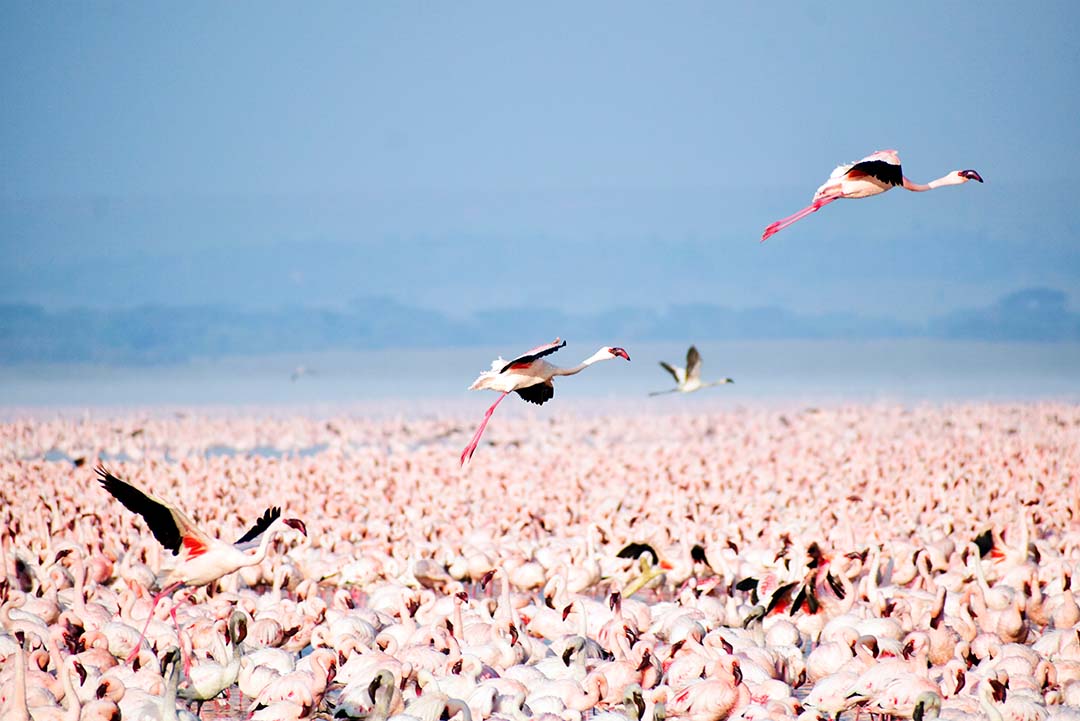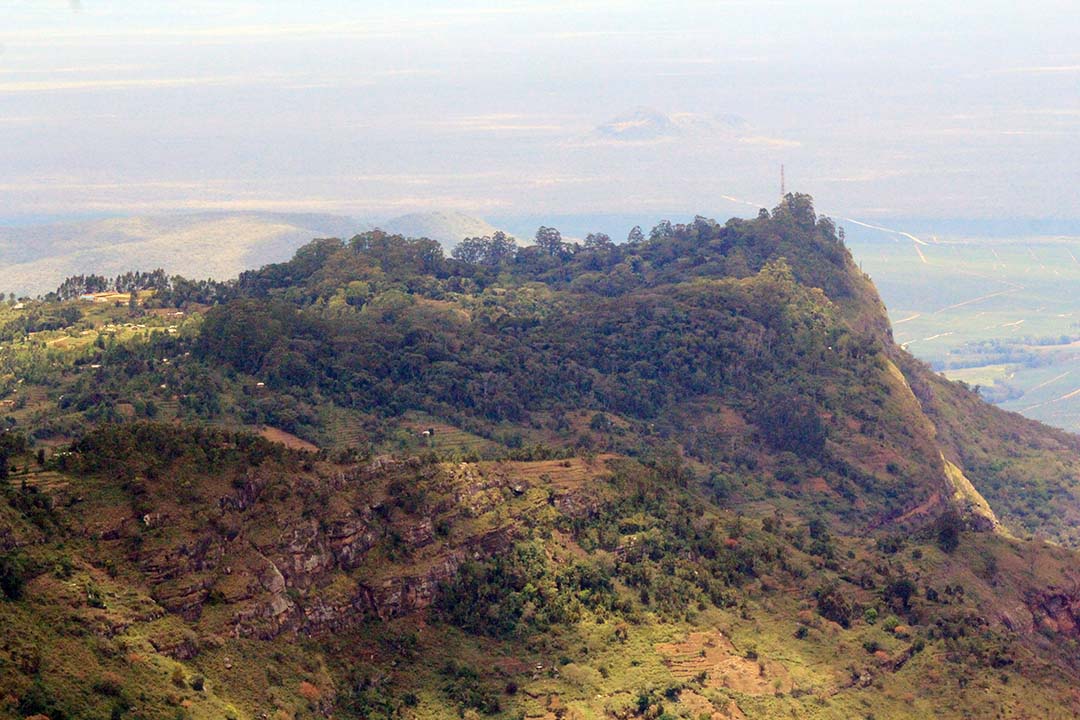About us
Nature Kenya—the East Africa Natural History Society (EANHS)—is Africa’s oldest environmental Society, established in 1909 to promote the study and conservation of nature in eastern Africa. We remain a non-political and not for profit membership Society.
Nature Kenya strives to:
- Advance knowledge of Kenya’s biodiversity
- Promote conservation of key species, sites, and habitats
- Encourage community participation in conservation through capacity building and promotion of sustainable benefits
- Advocate policies favorable to biodiversity conservation
To achieve this, in 2022 to 2032 Nature Kenya will focus on five pillars:
- Save Species and Sites;
- Foster Sustainability;
- Build Support;
- Act on Science; and
- Consolidate Structures.
Nature Kenya’s strategic pillars are based on the premise that nature is our life support system, critical for people’s wellbeing and quality of life. Saving nature is not a choice but an obligation.
Our history
The Society’s inaugural meeting, held at the house of Lieutenant Governor Frederick John Jackson on the 25th March 1909, formed the first Society of its kind in East Africa—the East Africa Natural History Society (EANHS – then called the East Africa and Uganda Natural History Society). The group of people gathered there were interested in natural history and wanted to share information and give time to the advancement of a Society dedicated to the study of nature. These qualities have remained true in the members, of all ages, professions and backgrounds, who have been and are the mainstay of the East Africa Natural History Society.
The first members of the Society collected and identified specimens. They founded a museum in 1910 to house the collections and educate the public. This museum was transferred to the Government of Kenya in 1939, eventually becoming the famous National Museums of Kenya. In 1910, the members of the Society also founded a scientific journal. This journal is still published today, in collaboration with the National Museums of Kenya, as the Journal of East African Natural History. This journal and other natural history publications are found at the Society’s Library co-managed with the National Museums.
In the mid-1990s, Dr Leon Bennun, then chairman of the Society, led a transformation of the EANHS to an active conservation organization under the business name Nature Kenya. In addition to its collaboration with the National Museums of Kenya and membership activities, the Society began to undertake a variety of activities for biodiversity conservation – on the ground in Important Bird and Biodiversity Areas, in the area of policy and legislation, and for public information. This work has been ably continued to this day under the leadership of the Executive Director, Dr Paul Matiku.
Nature Kenya members today continue their active interest in natural history by joining working groups for Birds, Insects, Mammals and others, and action groups including Friends of Nairobi Arboretum, Friends of City Park and the Youth Committee. The Society continues strategic research collaboration with the National Museums of Kenya, the host and home for the Society. A monthly newsletter, annual magazine, regular e-mail notices and social media presence keep members and the public informed.
Our achievements
Achievements of the East Africa Natural History Society, now better known as Nature Kenya:
- Founded the National Museums of Kenya, now a world-renowned institution for research and education. In 1939, the Society handed over the Museum to the government through an understanding that recognizes the Museum as the Society’s permanent home, allows Society members free entry to the Museum and allows Society representation on the Museum Board. The Society and the Museum are so interlinked and intertwined as to be inseparable.
- Published, since 1910, the Journal of East African Natural History, a respected scientific journal now jointly produced with the National Museums.
- Established and maintained, with the National Museums of Kenya, a comprehensive natural history library that is a major resource for conservation in Kenya and Eastern Africa.
- Engaged its members in the study, enjoyment and conservation of nature in Eastern Africa, through field trips, lectures, publications, and opportunities to take part in research activities since 1909.
- The Wednesday Morning Birdwalks have been a weekly feature since they were started by Fleur Ng’weno in 1971. These have inspired many young people and some have set up businesses in the tourism industry as guides and tour operators. The bird walks have become a training and mentoring avenue for students pursuing tour business training in Nairobi.
- Initiated a conservation programme in 1998 focusing on species, sites and habitats that are critical for the conservation of birds and other biodiversity and require urgent action.
- Identified and designated Important Bird Areas (IBAs) for Kenya, in collaboration with the National Museums; and documented the plants, animals and other biodiversity of Eastern Africa as a contribution to expanding the taxonomic scope of priority setting from IBAs to Key Biodiversity Areas (KBAs). Since IBAs are KBAs based on birds, they are today referred to as Important Bird and Biodiversity Areas.
- Encouraged and supported community-based organizations to become Site Support Groups (SSGs) promoting conservation and alternative livelihoods at Important Bird Areas, especially those without official protection status.
- Developed partnerships among Government and non-government organizations for sustainable conservation action at IBAs through the Important Bird Areas National Liaison Committee (IBA-NLC). We work with others in the development of policies, legislation and institutional frameworks that safeguard the ecological sustainability of IBAs in Kenya
- Mobilized resources to connect nature and people to take action for biodiversity conservation through development and implementation of donor funded projects at priority IBAs in Kenya.
- Work globally through the BirdLife International Partnership and its network of like minded organizations in Eastern Africa and beyond in 117 countries and territories.
Despite all these achievements, species, sites, habitats – and people – continue to be severely threatened. Conservation in Kenya feels like moving a mountain. A lot remains to be done to:
- Recognize the full social, economic and environmental value of biodiversity and ecological goods and services
- Reverse unprecedented species and habitat loss
- Enhance human wellbeing through truly sustainable production systems and development initiatives
- Enhance environmental governance and public appreciation to take into account the full costs of the loss of biodiversity and ecological goods and services
- Engage the public and business in biodiversity conservation
- Mobilise resources to build both government and local community conservation action capacity and to alleviate poverty by linking conservation and development.



